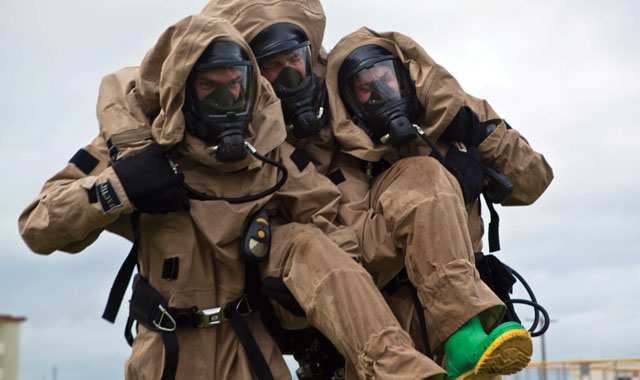Understanding the Barriers to Medical Countermeasure Development

There is an urgent need for new medical countermeasures for chemical, biological, radiological and nuclear (CBRN) threats – so why isn’t the industry providing them?
Despite efforts by the Department of Defense (DoD) to encourage development of new vaccines and therapies in the private sector, progress in medical countermeasure development has lagged over the past several decades. As CBRN threats proliferate in war zones such as Syria and terrorists become more sophisticated, attention is needed to address the barriers to countermeasure development.
Here are top three challenges facing the industry today.
1. Poor Economic Incentives
Drug development of any kind takes a huge amount of investment. It can take hundreds of millions of dollars and more than a decade to bring a new drug or vaccine from initial research through FDA approval and market launch. For products with large and predictable markets – such as therapies for heart disease or asthma – pharmaceutical companies can count on a healthy return on investment to make it all worthwhile. Medical countermeasures, on the other hand, are extremely unlikely to return a profit to their developers.
Medical countermeasures have a built-in handicap from an economic perspective: ideally, none of these products will ever be used. You won’t see ads for them on TV, and the general public will probably never even know their names. At most, they are likely to be stockpiled for emergency use or used in small quantities by warfighters and first responders.
The DoD can address the ROI problem by directly paying for development costs, but for larger pharmaceutical companies the opportunity cost simply isn’t worth it. Even if development costs are covered, large companies are much better off spending time developing the next big blockbuster drug. The “fee-for-service” development model is much more attractive for smaller biotech companies and startups. However, these smaller entities have challenges of their own.
2. Access to Specialized Development Resources
Smaller biotech firms are increasingly staffed with top-notch scientists and are more open to new business models. However, these companies often lack the resources needed to push their product through the long, arduous processes of development and approval.
Due to the dangerous nature of the chemical and biological weapons they treat, medical countermeasures generally cannot go through the standard human clinical trials used for approval of most drugs and vaccines. This means they must be brought to market under an alternative FDA pathway that uses clinical models instead of human testing. Smaller biotech companies may not have the resources and expertise to develop and validate clinical models for research and development. They also may lack facilities and experience in working with highly virulent or toxic biological and chemical agents.
Small companies may struggle with scaling up new products for manufacturing. For drugs with commercial applications, small companies can often partner with larger pharmaceutical companies for these final steps. However, it is harder for companies to find a partner willing to take on the risks for medical countermeasures.
3. The Vendor Approval Process for Federal Contractors
It’s no surprise that working with the federal government involves a lot of paperwork, and it’s often the last thing a startup or small firm wants to do. The Federal Acquisition Regulation (FAR) process for vendor approval can be daunting for smaller companies. Unless they know in advance that there will be sufficient contract work to make it worth their while, smaller companies may not want to invest the time and effort into the process.
These challenges must be addressed in order to meet the need for new medical countermeasures for chemical and biological weapons. If we can lower the barriers to entry and improve the economic incentives for smaller biotech companies, they are likely to be the key to finding innovative new solutions to protect warfighters, first responders and civilians in war zones.
About the Author
Russell Coleman is a Senior Market Manager at Battelle. After nearly 28 years of military service, he retired as a Colonel from the Army and joined Battelle in 2016. Before his military retirement, he led the Department of Defense organization responsible for developing medical countermeasures needed to protect military members from CBRN weapons.
BATTELLE UPDATES
Receive updates from Battelle for an all-access pass to the incredible work of Battelle researchers.